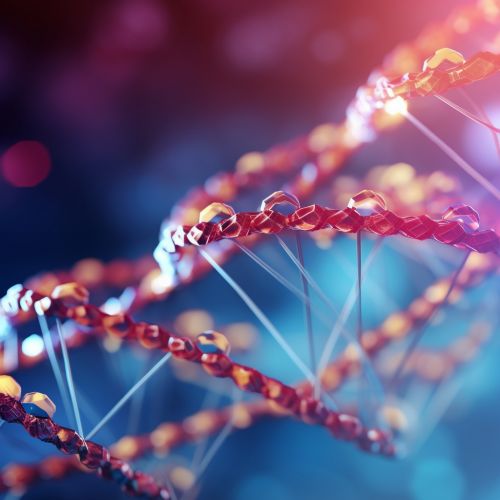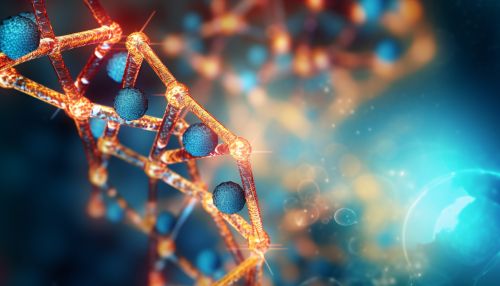DNA glycosylase
Overview
DNA glycosylase is a type of DNA repair enzyme that plays a crucial role in the base excision repair (BER) pathway. These enzymes are responsible for identifying and removing damaged bases in DNA, a process that is essential for maintaining the integrity of the genetic code.
Function
DNA glycosylases function by scanning the DNA for damaged or incorrect bases. When they encounter a damaged base, they flip it out of the DNA helix and into the enzyme's active site. This allows the enzyme to excise the damaged base, leaving behind an apurinic/apyrimidinic (AP) site. This AP site is then processed by other enzymes in the BER pathway to complete the repair process.
Types of DNA Glycosylases
There are several different types of DNA glycosylases, each of which recognizes and removes a specific type of damaged base. These include:
- Uracil DNA glycosylase (UDG): This enzyme removes uracil bases that have been incorrectly incorporated into DNA.
- 8-oxoguanine glycosylase (OGG1): This enzyme removes 8-oxoguanine, a type of oxidative damage to DNA.
- Alkyladenine DNA glycosylase (AAG): This enzyme removes alkylated bases, which can be caused by exposure to certain chemicals.


Mechanism of Action
DNA glycosylases use a base-flipping mechanism to access the damaged base. The enzyme binds to the DNA and distorts the double helix, causing the damaged base to flip out of the helix and into the enzyme's active site. The enzyme then cleaves the N-glycosidic bond between the base and the sugar-phosphate backbone, releasing the damaged base. The resulting AP site is then recognized and processed by other enzymes in the BER pathway.
Role in Disease
Mutations in DNA glycosylase genes can lead to a variety of diseases. For example, mutations in the UDG gene can cause immunodeficiency, centromeric instability, and facial anomalies (ICF) syndrome. Mutations in the OGG1 gene have been linked to an increased risk of lung and kidney cancer. Additionally, some studies have suggested that DNA glycosylases may play a role in the aging process, as the efficiency of DNA repair declines with age.
Research Directions
Current research on DNA glycosylases is focused on understanding the detailed mechanisms of these enzymes and developing drugs that can modulate their activity. Such drugs could potentially be used to treat diseases caused by DNA damage, such as cancer and neurodegenerative disorders.
